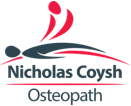NCTV Episode 65
Continuing with the series of bitesize health tip videos which can be found here on my YouTube Channel, this episode, includes:-
- An introduction to this unpleasant condition you probably wouldn’t want introducing to
- Causes to avoid
- Symptoms to know about
- Physical therapy options
- How to prevent them
Transcript
If you’d prefer to read the content within, rather than watch the video, then feel free to read the transcript, as follows:-
Hello and welcome to NCTV Episode 65 which is all about cervicogenic headaches and how to manage them.
So to answer question number one – what is a cervicogenic headache? It is simply another name for a headache that originates from the neck. It’s one of the most common types of headache and whilst they can happen at any age, they mostly occur between ages 20 to 60. You may also hear them being referred to as secondary headaches because they originate from a primary underlying neck disorder, frequently with nerve irritation. Fortunately, by fixing your neck problem, this will usually alleviate your headache.
So why do they come about? Any dysfunction in the vertebral joints of the upper neck can limit the movement and result in nerve irritation. By dysfunction, this could include not only compromise of the joints but also ligaments, tendons, muscles or even the discs between the vertebrae. People who experience cervicogenic headaches usually have a history of neck injury, such as whiplash although they can just as equally come about as a result of repetitive or sustained poor postures as over time this will also ‘damage’ these structures. Referred pain from the neck occurs because the nerves that supply the upper neck also supply the skin overlying the head, jaw line, back of the eyes and ears. Therefore, pain arising from the structures of the upper neck, may refer pain via the nerves to any of these regions, thereby causing a cervicogenic headache.
Other causes of cervicogenic headaches, aside from whiplash, may be heavy lifting, prolonged slouching, poor posture, excessive bending or twisting of the neck, working at a computer or activities using the arms in front of the body like housework.
The symptoms can include:-
- A gradual onset of neck pain and headache during an activity
- A constant dull ache, normally situated at the back of the head, although sometimes behind the eyes or temple region, and less commonly, on top of the head, forehead or ear region.
- Pain is usually felt on one side, but occasionally both sides of the head and face may be affected
- Pain that’s made worse by neck movement or posture
- Neck pain itself, especially with tenderness over the upper neck joints
- Stiffness and difficulty turning the neck
- Pain, pins and needles or numbness may also be felt in the upper back, shoulders, arms or hands, although this is less common
- Occasionally you may experience other symptoms, including: light-headedness, dizziness, nausea, vomiting, tinnitus (which is ringing in the ears), decreased concentration, an inability to function normally, and sometimes depression
- In rare cases, cervicogenic headache may also be associated with sensitivity to noise, or light, blurred vision and difficulty swallowing making them easy to confuse with migraines or cluster headache although cervicogenic symptoms tend to be lower in severity.
So now you know more about cervicogenic headaches and established whether that’s what you have, here’s what you can do about it.
Firstly, whilst this type of headache may respond to medication including analgesics, anti-inflammatories, stronger opioid-based medication, even nerve blocking injections – these drugs usually treat the symptoms of the headache and not the primary underlying cause. Unless the origin of the headache ie. the upper neck dysfunction, is treated and corrected, the headache will return in time.
Physical therapy treatment will focus on the soft tissue release and joint restrictions in the upper neck as well as areas like the front of the neck and upper back area. It may also involve some exercises to strengthen weak muscles and stretch the tightened muscles. Some of the modalities of treatment that have proven to be effective are manipulations of the neck and upper back, myofascial release, trigger point therapy, posture correction and acupuncture.
Following physical therapy, recovery time varies depending on compliance with treatment and the severity of injury. In minor cases of cervicogenic headache some people may be pain free in as little as a few days after treatment, although sometimes it may take 2 – 3 weeks. In severe or chronic cases, a full recovery may take weeks to months.
Remember to prevent the headaches from returning and your neck relapsing into their ‘bad habits’, continued management must include exercises, involving a regular stretching programme and specific strengthening exercises.
Finally, correct the contributing factors and this will go a long way towards preventing recurrence. The contributing factors may be:-
- Inappropriate desk setup
- Poor lifting and carrying techniques
- Inappropriate pillow or sleeping postures
- A sedentary lifestyle
- Excessive slouching, bending forwards or shoulders forwards activities.
- Stress management
- …and Healthy diet & proper hydration.
So that’s all for today, I’ll see you next time for some more bitesize bits to help your health flourish. Bye for now!

